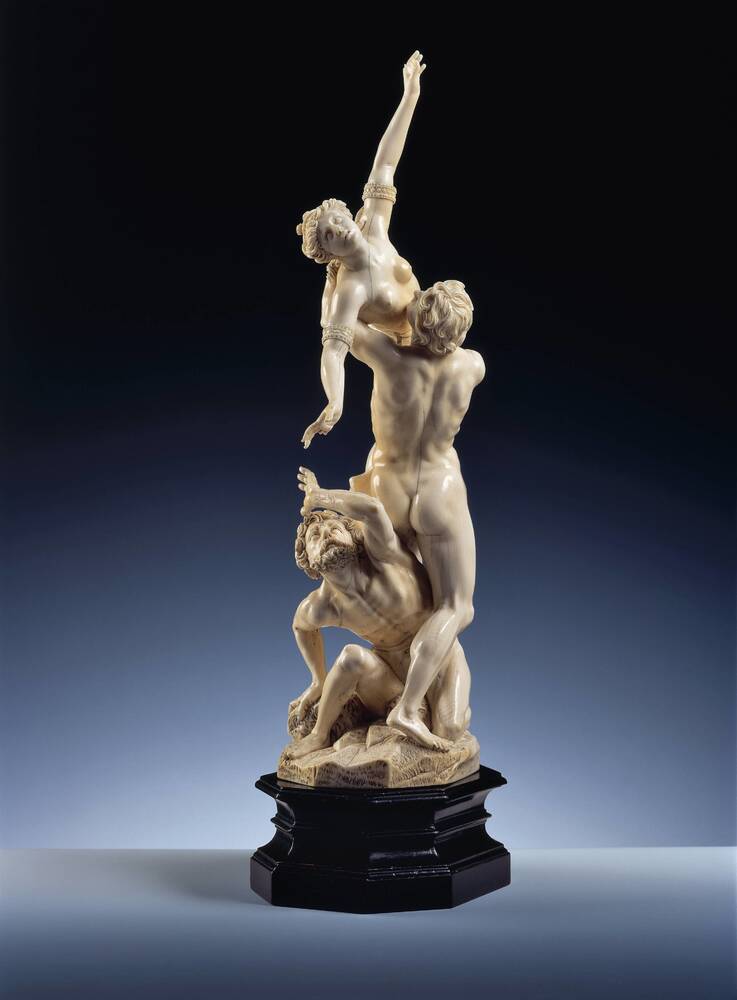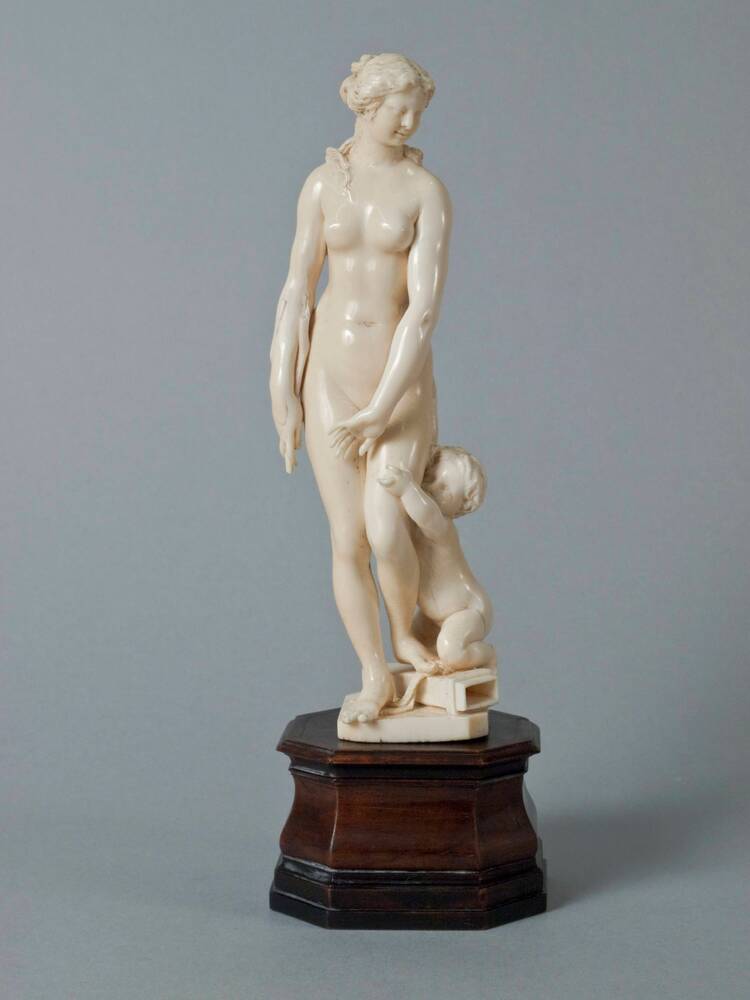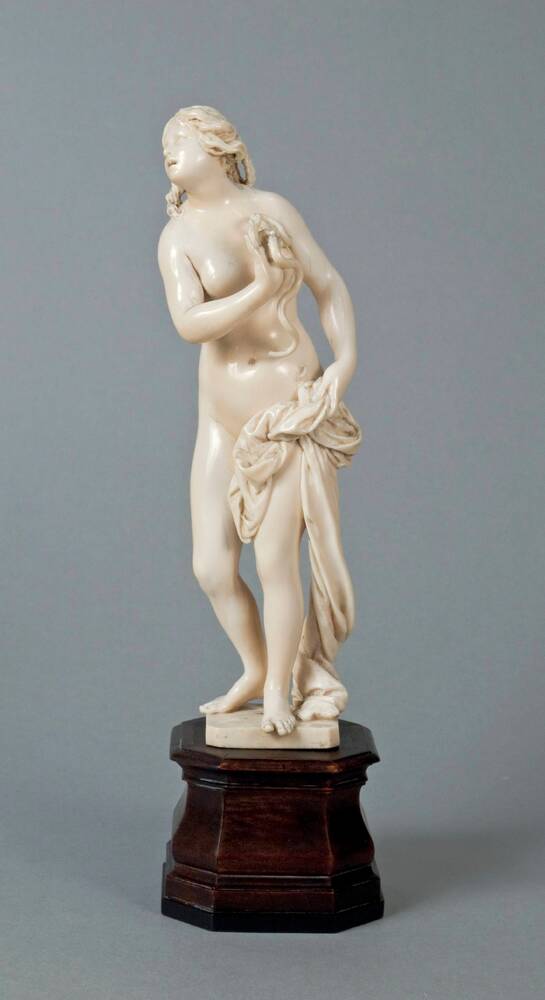A powerful man embraces a resisting woman. He has forced a second man to the ground. The scene illustrates a legend from the founding of Rome. It seems that at first there was a scarcity of women. Romulus, the founder of the Eternal City, tried to persuade the local tribes to supply the Romans with wives, but they refused. To solve the problem, Romulus employed a trick. He invited one of the tribes, the Sabines, to attend a festival of games. When the neighbours arrived, the Romans fell upon them and seized their young women.
This ivory sculpture depicts the moment in which a young Sabine woman is carried off. She has been lifted off the ground and her arms are flailing helplessly. Her father is unable to help. The muscular Roman has flung him to the ground.
This small work was based on a marble statue by the Flemish-born Italian sculptor, Giambologna. The original was frequently copied. It was carved in 1582 and stands in the Loggia dei Lanzi in Florence. This ivory version by Melchior Barthel is dated 1670 – that’s almost a century later. Nevertheless, the influence of classical sculpture and the Renaissance tradition is unmistakable. However, Barthel has created a more vertical and compact group. That makes his work less dramatic than the Italian original. But look how smooth he has got the surfaces, and how fine the detail is!
Ivory sculptures were very popular in the German empire during the first half of the seventeenth century. That’s reflected in the Green Vault collection.
Melchior Barthel was an important ivory craftsman and artist. He originally came from Dresden, but had lived in Venice for many years. So Johann Georg the Second was very lucky to have him back working in his home-town. Barthel died in Dresden in 1672 – at the age of fourty-seven.


